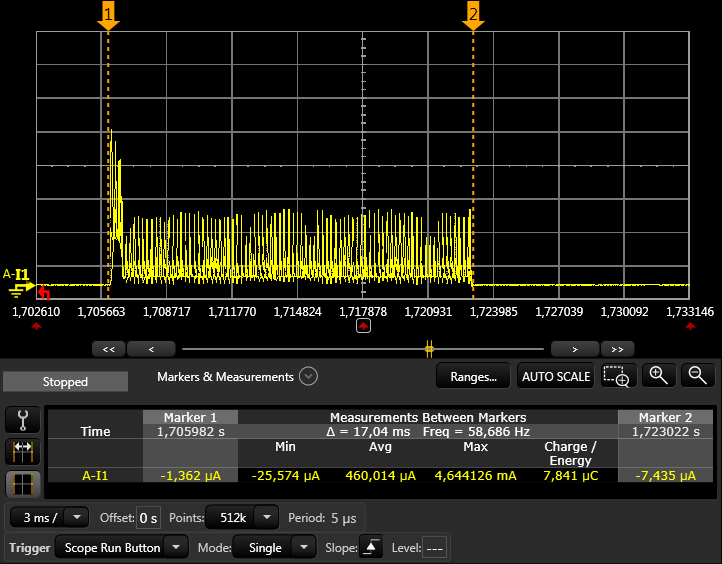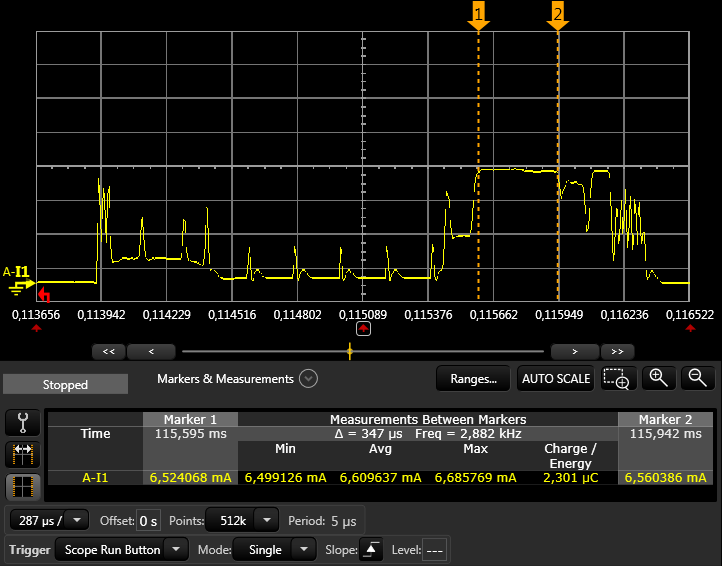I use the nRF52832 IC of WLCSP package. In addition, it sets as follows:
{.source = NRF_CLOCK_LF_SRC_RC, \
.rc_ctiv = 16, \
.rc_temp_ctiv = 2, \
.xtal_accuracy = NRF_CLOCK_LF_XTAL_ACCURACY_250_PPM}
How much current consumption increases as compared with the case of using an external crystal ?
Also, please tell us in detail why the current consumption increases.
thank you
uba




